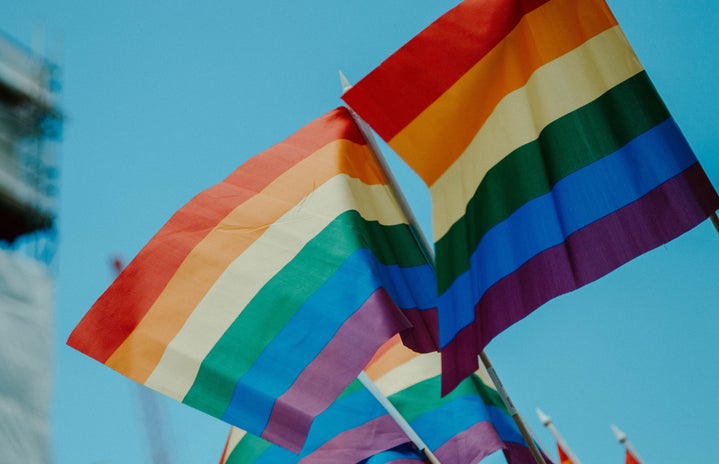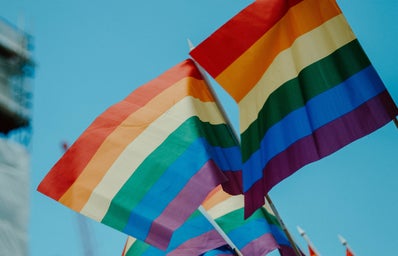Edited by: Maitree Jain
The sun glinted off the thousand reflective surfaces; sunglasses, jewelry, and mirrors creating tiny rainbows on the path to Jantar Mantar at the Delhi Queer Pride. I showed up too, rainbow scarf, a cheery smile, an aura of victory around me, and the like. My excitement was hit with a sudden surge of overwhelming emotion, a strange mix of sorrow, anxiousness, joy, and relief.
12000 people didn’t just surround me, I was in the midst of 12000 stories, each attached with its own struggle and history, all converging to create a new one. The implications and undercurrents were not explicit but could be felt beneath the surface. Pride and dissent were not just in bold and beautiful banners but in shy touches; the gentle caressing of two hands and in discrete pecks and passionate kisses. Secretive glances conveyed what was unsaid, or could not be heard over the loud dhol. The pulse that ran through everyone, the urgent urge to savor the freedom and the moment while it lasted in the midst of the uncertainty around same-sex marriage laws in India.
Newspapers and media will give you a very comprehensive account of the parade. There was dhol, dancing, exquisite costumes, witty placards, and a huge balloon arch. Here’s what they won’t tell you. Two old men walked holding hands under that very balloon arch, their hands breaking apart as soon as anyone looked in their direction. Under the pride flag, two twenty-year-olds kissed fiercely, happy and unabashed in their little bubble. Somewhere the night before, a young 17-year-old told her mother she was going out for lunch and sneaked off to the parade. Right next to her stood a boy, surrounded by his family, all of them walking along. While some wore stunning costumes and gave their two words to media channels, a lot stayed hidden behind them, afraid that tomorrow their faces would be published in a newspaper. The signs and banners reached the parade hidden in jackets and big bags, they never left the parade though, because they couldn’t be taken home. A pile of them stayed on the right side of the road in a pile, staring down at passersby, a small remembrance of the people that walked this path.
While I looked through the cracks and crevices inside, a few stood at the fringes. Not quite sure whether to step in or not, still moving along with the swarm of people. Beyond the world of those confused, other faces outside the parade reflect curiosity often mingled with disgust.
“Who are they”
“Why are they so dressed up?”
“What’s with that makeup on a man?”
Who are we? We’re people, just like you. We love just like you, eat just like you, and sleep just like you. Somehow, we can’t exist like you. Our existence must be hidden because you deem it strange; queer. Hidden under layers and layers of false pretenses only to be revealed to the people we trust the most, a scared whisper uttered exactly at the right time, at the right place. This is why the parade; a place where we exist and take up space in a world that (mostly), tells us not to. The dhol, the dresses, and the dancing is not to impose our sexuality on you, but simply for us to embrace it, nurture it, and celebrate it.“Free hugs!” read multiple posters. In a world that has so much love to offer, we just want to give a little more, sharing the tight (consensual) hugs with you, hoping that someday, you too would accept our love with open arms.
The queer parade also stands as a reminder of everything that’s left to be accomplished, and with each step I took, I walked a little closer to a possible utopia. In the harsh Delhi sun, volunteers distributed masks and bottled water, always with a cautionary note of not throwing the bottles on the street. The parade in itself offers respite from the bigotry and hate, a small bubble of acceptance, warmth, and calmness. Amid witty signs of “gharwale mann gaye lekin government nahi maani”, there were also signs advocating for inclusivity for dalits, and against gender stereotypes. These were the small nuances, hidden in the cracks and crevices of Delhi’s Queer Parade.
To everyone who reads this, you belong, you matter and I hope that you and I take steps and leaps together, hoping to make this world a slightly better, safer, and more inclusive space, for all of us to exist and thrive in. Oh and of course *free hugs* <3


